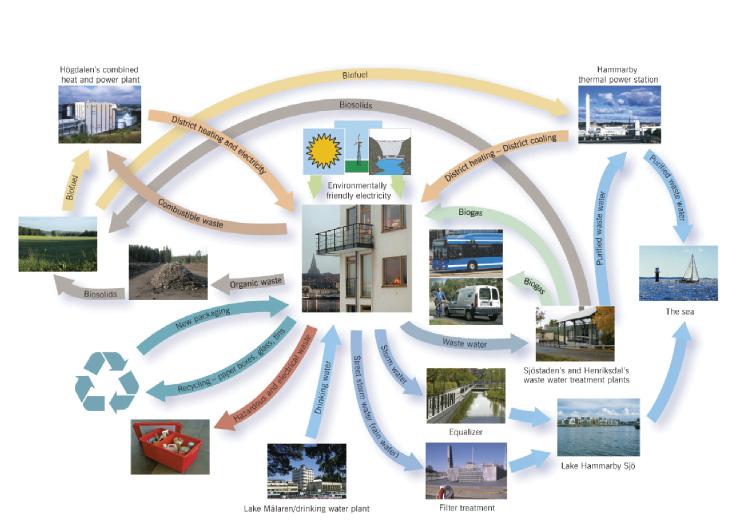
1 minute read
Figure 3.21 The Hammarby Model for Stockholm
Energy
Waste
Advertisement
Water
Figure 3.21 The Hammarby Model
Source: Fortum, Stockholm Water Company, City of Stockholm.
The environmental load profi le
An environmental assessment tool, the ELP, has been developed through a cooperative eff ort by the City of Stockholm, the Royal Institute of Technology, and the consultancy fi rm Grontmij AB. The ELP assesses environmental performance and follows up on the targets set in the project’s environmental program. It is a life-cycle assessment tool that defi nes relevant activities from an environmental perspective and quantifi es the environmental loads originating from these activities, such as emissions, soil pollutants, waste, and the use of water and nonrenewable energy resources. It accounts for all project development and implementation activities, including material acquisition, the transport of inputs and people, construction methods, electricity, heating, and materials recycling.
The main strengths of the ELP are that the tool is fl exible and dynamic, which makes it suitable for application under any conditions in planning, simulation, and evaluation. By factoring in well-constructed variables, one may use the ELP to calculate the environmental loads of various planning decisions during a project’s construction, operation, demolition, or redevelopment. The tool thus facilitates a life-cycle approach. Testing scenarios are facilitated. For instance, diff erent construction methods may be compared prior to taking decisions. Hence, decision makers understand environmental issues early in project planning. The ELP may also be used to evaluate the environmental performance of existing city districts or buildings based on the consumption of resources such as water and energy. The ELP enables analyses of environmental performance at multiple levels. The tool takes into account the activities and impacts of individuals (for example, cooking and laundry), buildings (building materials, dis-





